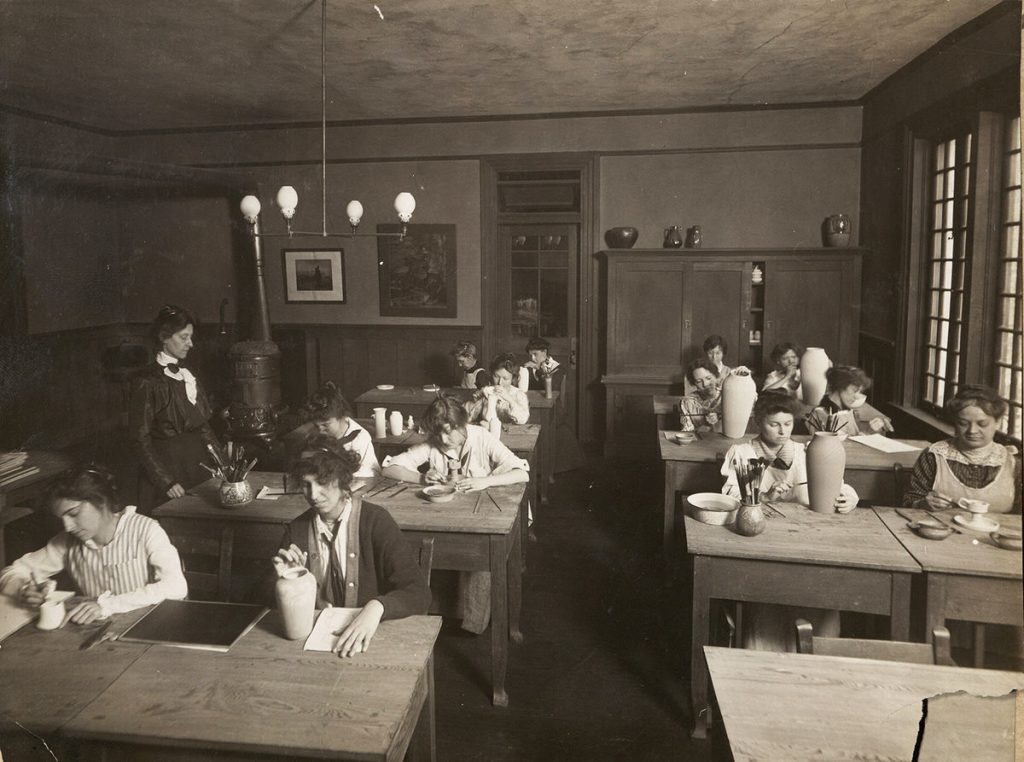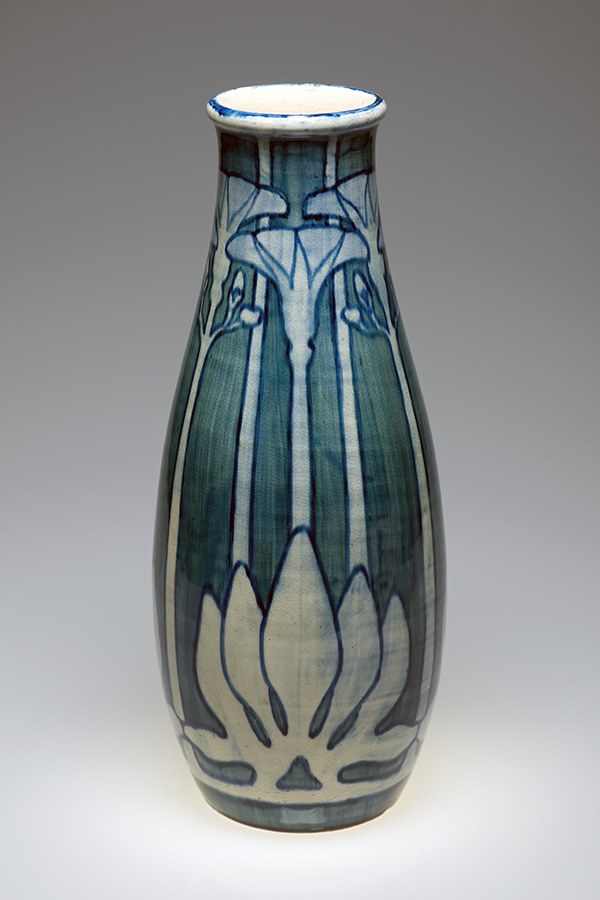In conjunction with the Craft Invitational exhibition, we invite you to explore some of the Craft movement’s figures, schools, and ideas.
Newcomb Pottery “EXPERIMENT”
Newcomb Pottery was a brand of American Arts & Crafts pottery produced from 1895 to 1940. It grew out of the pottery program at H. Sophie Newcomb Memorial College, the women’s college now associated with Tulane University in New Orleans, Louisiana. The Pottery was a contemporary of Rookwood, Teco and Grueby pottery.
In 1884 Tulane University hired William Woodward to start an art program at the school. That same year, the Cotton Exposition world’s fair was taking place across the street in Audubon Park. Inspired by exhibits at the fair, Woodward organized the Tulane Decorative Art League, teaching evening classes in pottery, carving, drawing, painting, and needlework. From this league, the New Orleans Art Pottery Club was formed.
In 1886, through the bequest of Josephine Louise Newcomb in memory of her daughter Sophie, Newcomb College opened as the very first coordinate college for women. William Woodward’s brother Ellsworth took over the art program at Newcomb. Inspired by the arts and crafts movement in England and the pottery factories of Europe, the Woodward brothers founded the Newcomb Pottery enterprise, which began production in 1894.
In 1895, a year after the Newcomb Pottery enterprise was founded, the Newcomb potters developed their style. All pieces were thrown and decorated by hand, with no two being alike. Each piece was required to be functional, but the primary purpose of the pottery was to be decorative. The vessels were made from local clays and their subject matter reflected the local landscape. At the time, because it was not considered ladylike to sit at a potter’s wheel, male potters employed at the Pottery threw the vessels, while the women were responsible for choosing the shapes and applying the decoration and glazes. From 1895 to 1902 Newcomb Pottery pieces reflected the arts and crafts era in which the Pottery was operating. The pottery often depicted Louisiana’s local flora, done in blue, yellow and green high glazes. After 1902 incising was developed as a design technique, giving the pieces an expressive and graphic quality.
As Newcomb pottery was becoming commercially popular and being sold across America, it was also being recognized for its craftsmanship. The Pottery won awards at several world expositions, including the bronze medal at the Exposition Universalle in Paris and three gold medals at the Jamestown Tercentennial in Virginia.
Newcomb Pottery experimented with some Art Deco styles from 1924-1929. Unfortunately, the designs were not well received. The Pottery survived the Great Depression, but by 1935 most of its original faculty and founders had retired or died. The new leadership at Newcomb decided to shift focus away from production and towards focusing strictly on education. They closed the Newcomb Pottery enterprise in 1939.
The Smithsonian Institution featured a traveling exhibition of Newcomb College Pottery from 2013 to 2016. The exhibition visited various cities around the United States, and displayed approximately 180 objects from the Newcomb College Pottery program, along with metalwork, jewelry, textiles and other objects made during the period the Newcomb Pottery was in operation.
Excerpted from the Newcomb Museum of Art.




